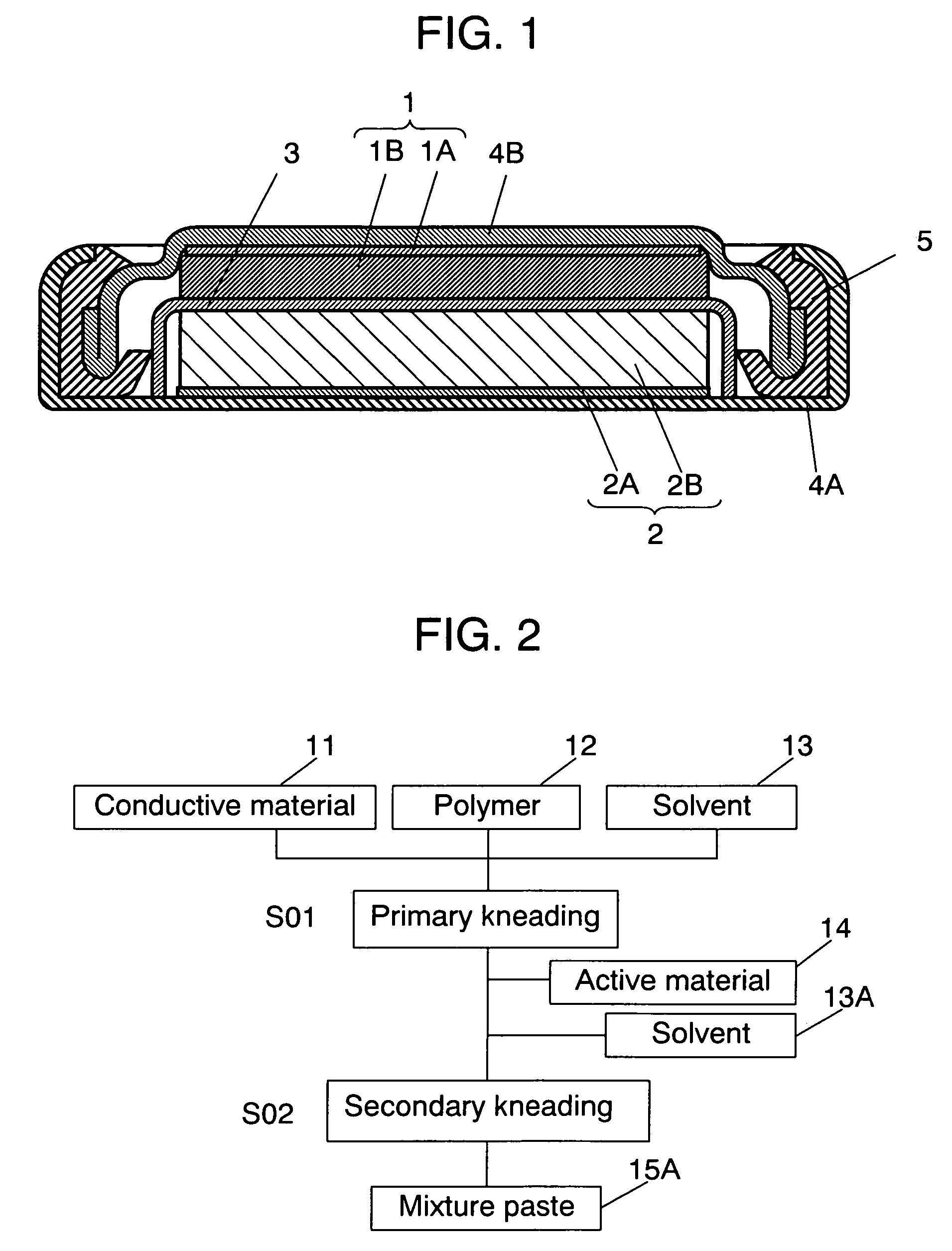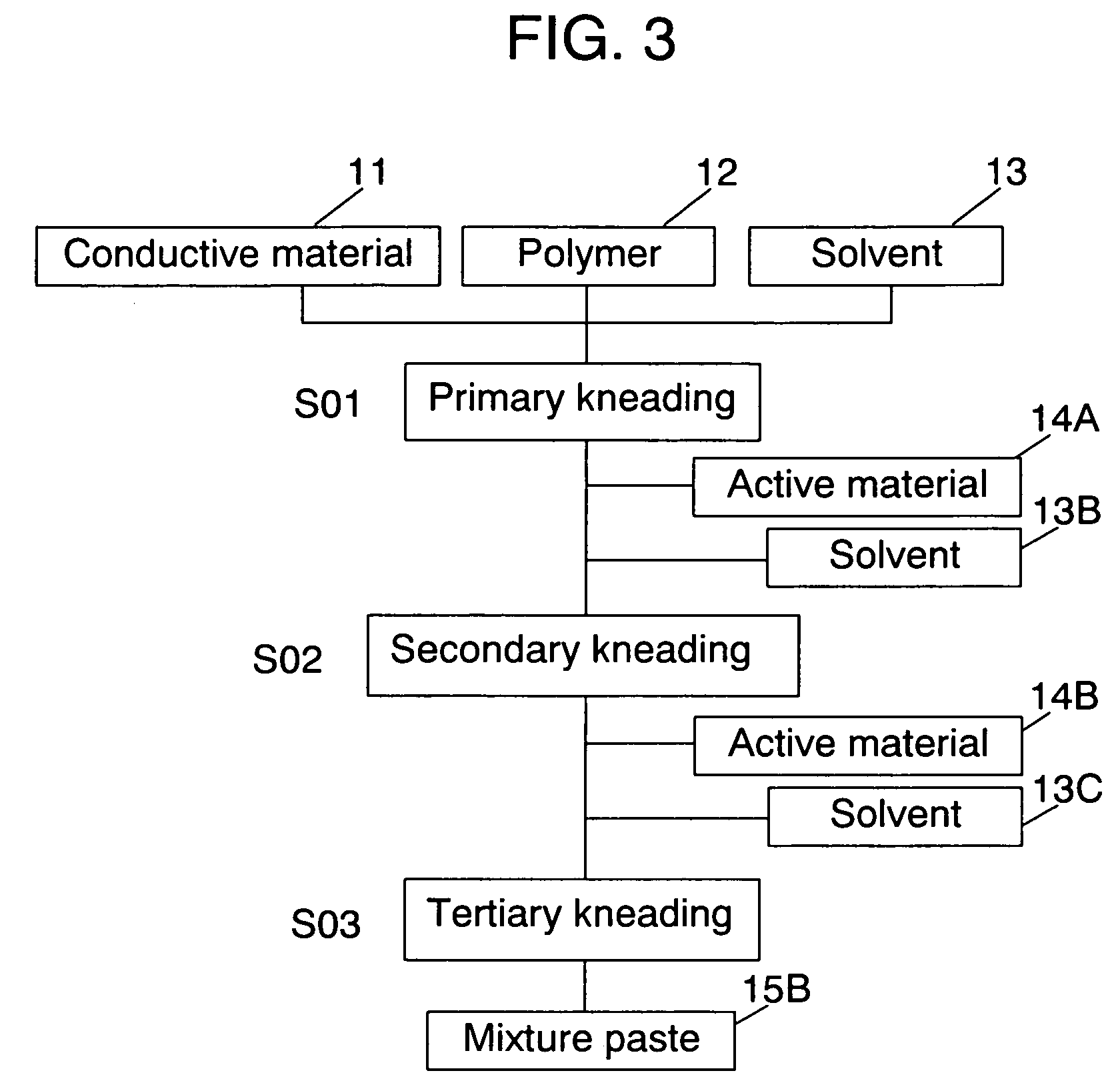Non-aqueous electrolyte rechargeable battery and manufacturing method of negative electrode employed therein
a technology of non-aqueous electrolyte and rechargeable batteries, which is applied in the manufacture of final products, cell components, electrochemical generators, etc., can solve the problems of limited capacity of the battery using carbon materials, short circuits, and safety hazards, and achieve large capacity, reduce the effect of significant reduction in conductivity and improved dispersibility of fibrous carbon
- Summary
- Abstract
- Description
- Claims
- Application Information
AI Technical Summary
Benefits of technology
Problems solved by technology
Method used
Image
Examples
Embodiment Construction
[0017]FIG. 1 is a schematic sectional view of a coin-shaped battery as a non-aqueous electrolyte rechargeable battery in accordance with an exemplary embodiment of the present invention. FIGS. 2 and 3 are flow charts showing manufacturing methods of negative electrodes in accordance with the exemplary embodiment of the present invention.
[0018] As shown in FIG. 1, the non-aqueous electrolyte rechargeable battery in accordance with the exemplary embodiment includes negative electrode 1, positive electrode 2, and separator 3. Separator 3 is disposed between negative electrode 1 and positive electrode 2, and prevents direct contact of negative electrode 1 with positive electrode 2. Negative electrode 1, positive electrode 2, and separator 3 are impregnated with electrolytic solution (not shown) as electrolyte. The electrolytic solution contains a non-aqueous solvent.
[0019] Negative electrode 1 and positive electrode 2 are laminated via separator 3. The laminated body is sandwiched by ...
PUM
| Property | Measurement | Unit |
|---|---|---|
| aspect ratio | aaaaa | aaaaa |
| thickness | aaaaa | aaaaa |
| aspect ratio | aaaaa | aaaaa |
Abstract
Description
Claims
Application Information
 Login to View More
Login to View More - R&D
- Intellectual Property
- Life Sciences
- Materials
- Tech Scout
- Unparalleled Data Quality
- Higher Quality Content
- 60% Fewer Hallucinations
Browse by: Latest US Patents, China's latest patents, Technical Efficacy Thesaurus, Application Domain, Technology Topic, Popular Technical Reports.
© 2025 PatSnap. All rights reserved.Legal|Privacy policy|Modern Slavery Act Transparency Statement|Sitemap|About US| Contact US: help@patsnap.com



